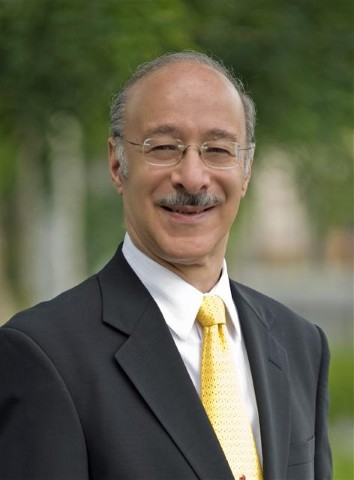
Steve Karoul is a recognized casino consultant with 35 years of hands-on experience with the best casinos both within the United States and internationally. He is also an authority on all aspects of casino marketing. Steve has lived in numerous countries and has conducted casino marketing activities in well over 100 countries around the world. He is an author, a lecturer and an educator who often injects his own hands on experiences and openly shares his ideas and thoughts with fellow industry executives. Telephone +(1-860) 536-1828 or skaroul@comcast.net or see www.euroasiacasino.com
Managing a casino resort today is much more complicated than in the past. Before, the primary emphasis was always on game security and preventing internal theft. Today, the emphasis is more on maximizing bottom line profitability. Many casino operators have had to review their operating philosophies in many different areas in order to achieve this new objective. With the help of various technological improvements in surveillance equipment, casinos have been able to reduce man power and payroll for the area of game security. This reduction in payroll has obviously helped improve bottom line profits.
Along these same lines, an often overlooked area for helping to tweak bottom line profitability is an area that I refer to as optimization of room occupancy levels as well as the occupants themselves. Here at xxxxxx Casino we find that it is important for us to balance the ratio of comp to cash room revenue. Many people will argue that is better to fill the hotel with all casino customers and comp all of their room nights. However, the problem is that many of these customers play in the casino using casino credit. That means that their markers may not come due for 45 to 90 days or longer depending upon the gaming jurisdiction and regulations. In the meantime, the casino still has to pay out huge cash disbursements each week to cover payroll, taxes, utilities, vendors, etc. I don’t think your employees or your vendors would want to accept a partial cash payment and a partial comp dollar certificate or I.O.U. note if the casino did not have sufficient cash flow that week to cover all obligations. Therefore, managing cash to comp ratios is an important function today in any large casino hotel operation.
A hotel room is similar to any perishable product and should be treated as such. That means that if you miss an opportunity to sell a hotel room that you also lose that revenue earning opportunity and can never make it up. It is no different than a seat on an airplane. Once that airplane takes off with an empty seat, the airline loses that potential revenue and can never make it up. Consequently, we not only have to maximize our hotel occupancy but we also have to optimize it as well.
Maximizing hotel occupancy is pretty straight forward and any good hotel manager who is worthwhile should be able to forecast hotel occupancies and adjust his or her marketing strategies to fill as many rooms as possible every night of the week. This can be done through various standard hotel marketing techniques. However, the real challenge occurs when the hotel is part of a casino complex. The new challenge is to not only fill every room in the hotel but to fill every room in the hotel with the best possible occupant. If it is a cash paying customer, we want someone who will pay the highest possible rack rate and if it is a Comp customer, we want someone who will play to a certain pre-established level of play to justify that casino comp as well as yield a reasonable profit for the casino. It sounds easy enough but it really is a fairly complicated process that requires rigid policies and procedures as well as sufficient training of all staff involved in the process.
One of the first steps that I would recommend is that you establish a new “rate by rank” system for establishing flexible rack rates and casino comp rates. Almost every casino today has some type of casino rating system that is used to measure and evaluate a casino customers play in the casino. Most of these rating systems all follow standard logic and relate everything to Earning Potential or Theoretical Win. They mean the same thing so I will refer to everything in terms of Theoretical Win or Theo. Here at xxxxx our casino rating system ranges from Ranks 1A to 9D. We use an alpha – numeric system where a Rank #1 player is our best player and a Rank # 9 is our worst or smallest rated player. We also use an Alpha letter in conjunction with the number to indicate the player’s level of profitability for the casino. We use A,B,C & D where A = actual profitability of 75% to 100%, B = 50% to 74%, C = 25% to 49% and D = actual profitability less than 25%. The numeric numbers are based on Theo and the Alpha letters are based upon Actual profitability but combined they provide the viewer with a very quick snapshot of the “value” of that player. For example, a 1A player would be far more valuable to the casino than a 1D rated player.
Our Rate by Rank hotel system is based upon a players rank. For example, our standard hotel room has a rack rate that ranges from a low of $155 per night to a high of $330 per night. A Rank 2A player would be charged less in either comp dollars or in cash than a Rank 7A player since they represent greater value for the casino. Therefore the more valuable players receive a larger rate discount. We currently have approximately 1,500 hotel rooms and are now adding an additional 850 rooms. Suppose we use a 50 / 50 comp to cash ratio for room’s allocations, the additional incremental cash room revenue will be extremely substantial not to mention the increased casino revenue derived from this same principle of optimization for the comp side of the ratio. Think back for a moment to the comparison of the airplane that takes off with twenty empty seats. The airline would lose that revenue potential for ever. Now imagine that same airplane and we are able to fill those twenty empty seats with passengers willing to pay a higher First Class fare you can begin to better understand dynamics of rooms optimization. The incremental profit goes right to the bottom line.
The second process that I would recommend is that you establish formal procedures for Suite and Villa assignments and for “bumping” or down-grading or upgrading players. Suites and Villas are just like Business Class and First Class seats on an airplane. They are high yield profitability resources that have to be managed extra carefully due to their limited availability. We have 23 Villas with butler service and 194 suites which sound like a lot. However, on any given weekend we normally have substantially more requests from qualified players that might get a Villa or Suite during the week. Therefore we need to have a culling out process to optimize their utilization during our high demand weekend or special event periods. We have a Suite Committee that meets every Thursday to review all of the requests and make final assignments for the weekends, holidays or special events. The committee consists of members from the Casino Host department, Player Development department and the Hotel.
Suite Committee meetings used to take 10 to 12 hours for major special events or holiday weekends. Therefore, after careful review of the problem we developed a new ranking report called the Villa / Suite report which now ranks all Villa and Suite request reservations based upon pre-set criteria. We never confirm Villas or Suite assignments in advance. With our new Villa and Suite report we now insure that the best players go into the best accommodations. We have eliminated favoritism from the assignment process. Any exceptions to the policy now require approval from the Vice President of Casino Marketing or the Director of Casino Hosts. This has helped us to optimize our revenues substantially compared to the way we used to handle Villa and Suite assignments.
As far as criteria goes, we normally look first at;
- 12 month Theo Win (the larger the Theo the better).
- 12 month year to date Losses and Wins (the larger the Loss the better)
- This next step is critical in the suite process and will often determine who gets what in combination with the loss factor. We look at the customers Theo for the last year in combination with the number of trips that they have made for the year. The larger the daily trip Theo average for the year, the larger and more impact the player may produce in Theo Win for the casino.
- Overall lifetime losses can be considered as well for tie-breaking situations. This goes in hand with the lifetime value of a player.
- For really close situations, we also look at the amounts of credit or cash available for that trip. For example, a $100,000 credit line customer who currently owes you $75,000 from his last trip can only lose $25,000 on this trip. Therefore, a $50,000 player may be more valuable for this trip and may take precedence in a really close situation.
- Finally, we sometimes also look at the lifetime value of a player. Smaller players who lose consistently and are in the “A” profitability range are sometimes given preference as well in really close situations.
Due to the availability of our new Villa and Suite Report, our Suite committee meetings have gone from an average time of ten hours to now under two hours without any problems. In fact, both our employees and our customers now realize that we have one of the fairest suite assignment systems in the world. We get very few complaints from customers once we explain the process and they realize that it is a fair and non-partial objective process. Of course, there will always be special occasions and exceptions to the rule for numerous reasons. However, that decision making process now lies with one person – me. I am the bad guy who has to make the tough decisions. However, by me taking responsibility as a Vice President, it takes the pressure off of our Casino Host and Player Development Executives who are our front line sales people who need to maintain positive relationships with all of their customers.
Bumping is a term that for the most part refers to downgrading. However, at xxxxx, we also use bumping for upgrading as well especially during the week. If we are approaching full occupancy we use our rating system to select the best possible players to upgrade into a Suite or Villa at no additional expense to them. By doing this, we are also freeing up standard rooms which are much easier to sell that night for cash. This optimization process of selectively bumping up creates a lot of good will with decent players who may not normally qualify for a suite or Villa and also allows us to maximize room revenues from customers who are willing to pay for a standard room but not for a suite. This optimization and maximization process has also contributed to us being able to run our hotel at a 94 % annualize occupancy rate last year. We also strongly believe that this process has also helped us to maximize our casino revenues as well. Therefore, I highly recommend that if you don’t currently have a system in place similar to this for optimization and maximization that you implement one as soon as possible. You will notice the financial improvements. Good luck.
(Please feel free to forward to people in your network or your company if you think that they will benefit from my educational articles. Cheers….Steve Karoul)






